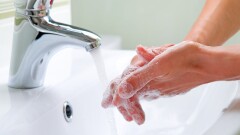Many firms have gotten by without standard business policies and procedures in place. The COVID-19 pandemic has highlighted the need to have a business continuity and disaster recovery plan and a pandemic plan in place. Now is an excellent time to consider updates to these plans as well as other business plans and policies.
The following 10 areas to update in your disaster plan, from CPA Mutual and Network Management Group Inc., are simply a starting point to get you thinking -- do not stop with these 10. They are areas that have needed attention most among CPA firms during the COVID-19 pandemic. Put employee safety first, and client or customer contact second.












